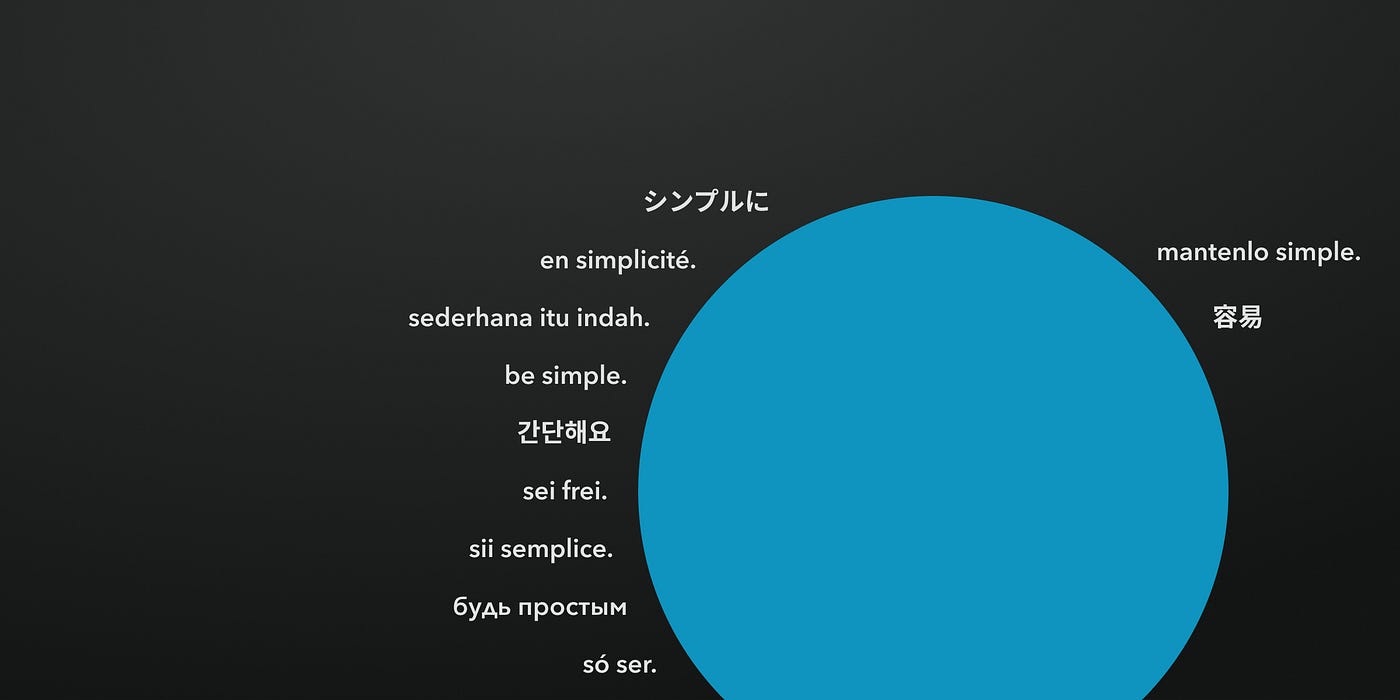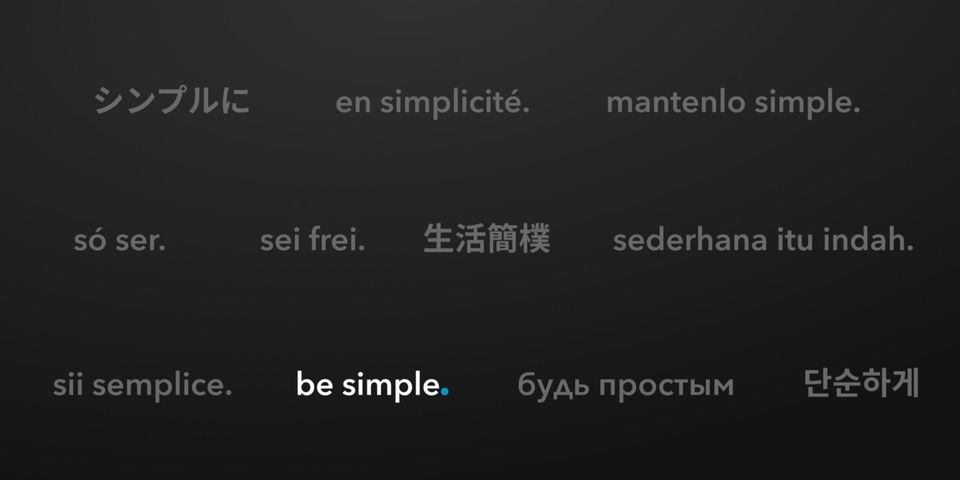While a large portion of the iPhone, iPad, and Mac userbase speak English, most do not. Even for those who do speak English, many would prefer to write (and think) in their native language.
Minimal is all about language. It’s a writing app. It needs to be internationalized and localized so that everyone feels at home.
But how we translate matters too. We’re taking a novel approach to translating our app so we can foster community while improving the experience of writing in Minimal.
Community-Based Translations
The typical approach to translating an app is to hire a service. We’d send them our words and phrases in English with contextual screenshots, and they’d send back the exact files we need for the translations to appear live in the app.
Per the recommendation of the iOS community on Twitter, however, we’re taking a different path. We’ve invited our community of beta testers to translate and participate in the design of Minimal in their native language. There are several principles here:
- Reduce long-term overhead. We’d like to institute a translation system that runs on its own, without continual management.
- Increase quality. We want the translations to be high-quality and relevant. The language of a product defines the product, and we want Minimal’s definition to originate from real notetakers.
- Foster community. Translating is an opportunity to bridge cultural divides. I’m confident that I’ll discover entirely new use-patterns, enabling me to become a better designer and engineer. I imagine the notetakers who help translate Minimal will increasingly appreciate writing in an app that they helped bring to form.
More Personally…
On a personal level, this community-based approach to translation helps me attack one of my biggest life goals right now: to build and create not as an individual but as a community.
In ecology, we learn about the “edge effect,” the profusion of biodiversity when two distinct ecosystems converge. For example, there are more species and more relationships when one ecosystem bleeds into another, like a forest transitioning into a meadow, or on the bank of a river.
The same “edge effect” pattern occurs in design and engineering. By building as a community, we tap into edge effects to create better, more beautiful technology.
As my ecology/gardening teacher taught me: “integrate rather than separate.” This is exactly what we’re doing with Minimal’s community-based translation system.

How the System Works
The first iteration of Minimal’s translation system is lightweight:
- We use cloud-hosted spreadsheets for the most important languages.
- Each word or phrase has its own row.
- The spreadsheet is divided into the following columns: the phrase in English, the phrase in the target language, and in a third column space for comments and questions.
Each row is color-coded to connote translation progress: blue (awaiting translation), green (updated translation), yellow (question), orange/red (problem). This allows multiple people to contribute, without the need for complex rules. It also allows me to know when changes have been made and then pull them into Minimal.
You can see our translation hub right here: Minimal | Translate.
We’ve tested in Italian, thanks to a generous and thoughtful notetaker living in Tuscany. The system works — adding a language’s translations into the Minimal app takes just a few steps. Importantly, incorporating improvements is not daunting.
It’s thrilling to watch Minimal come to life in Italian, and I can’t wait for more languages to arrive in the app. Please feel free to contribute your translations by following this link, and be sure to join the Minimal | Notes private beta right here.



